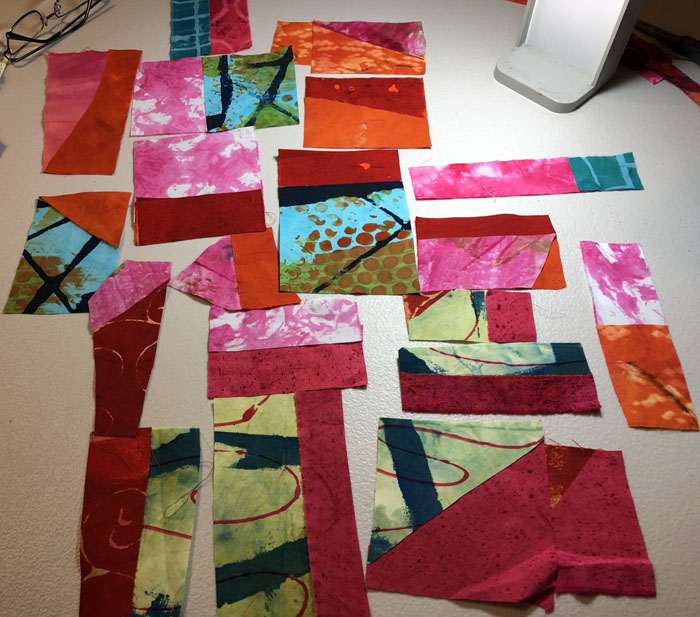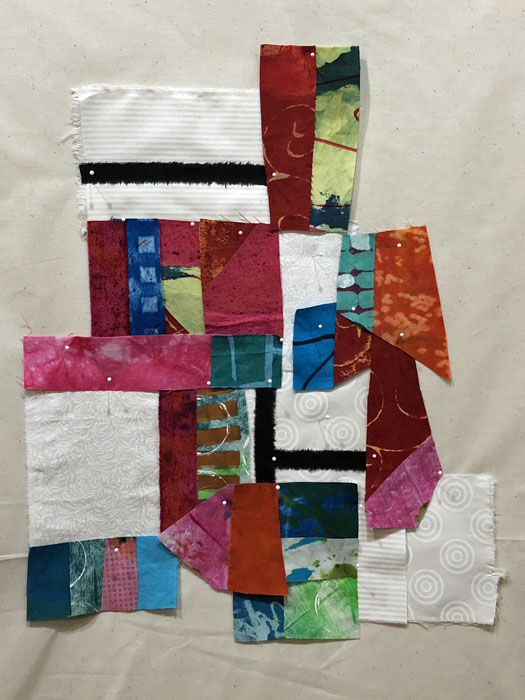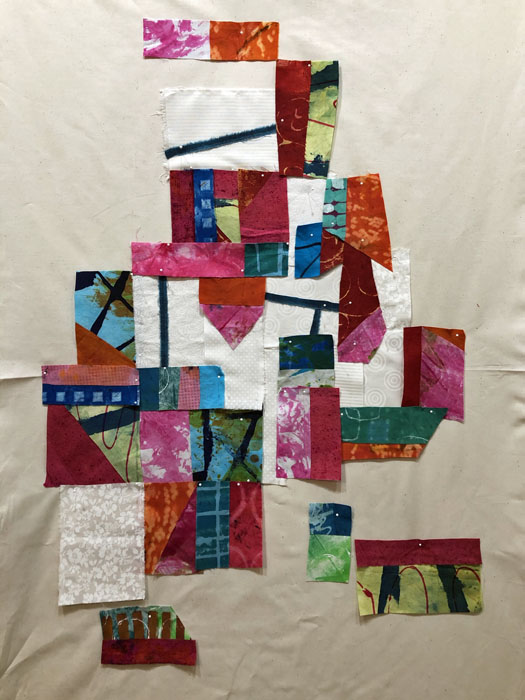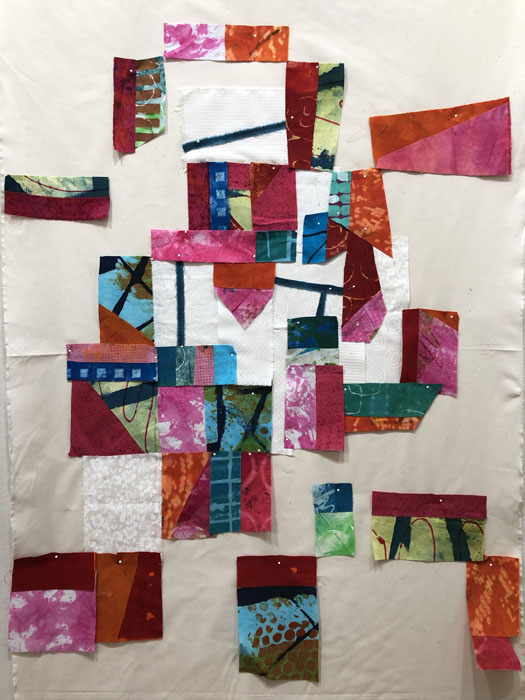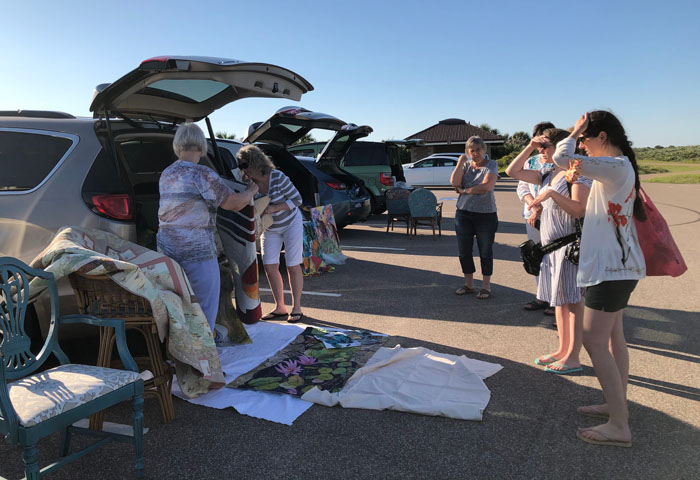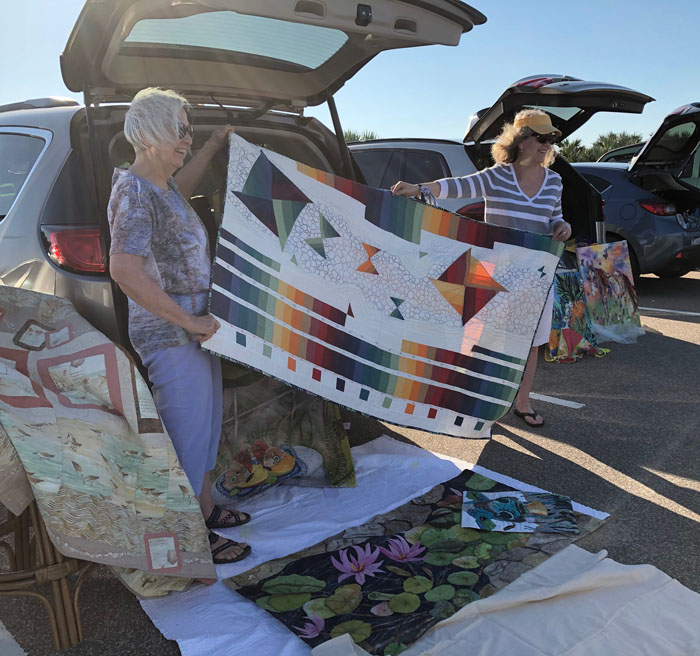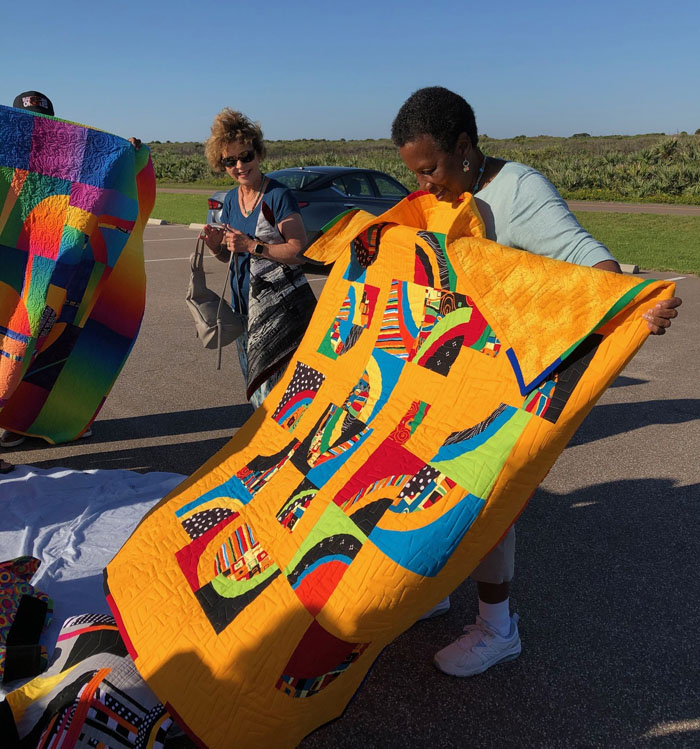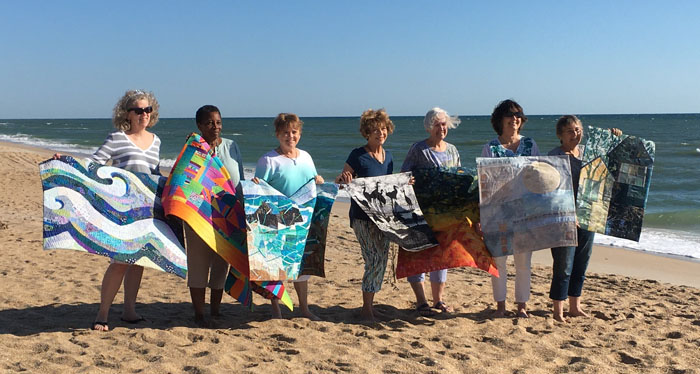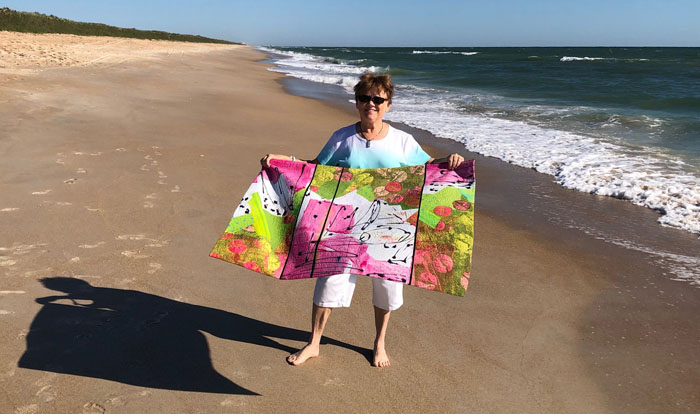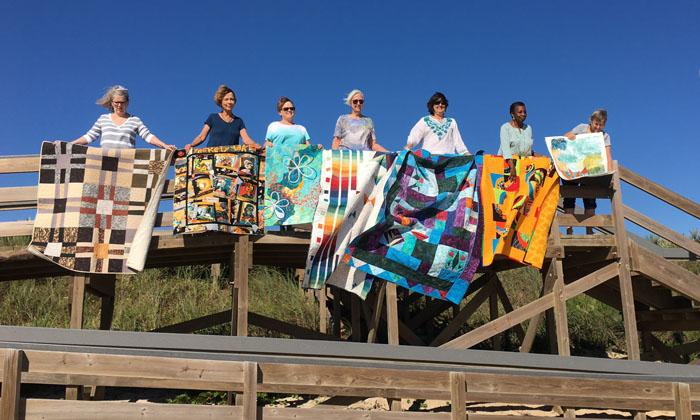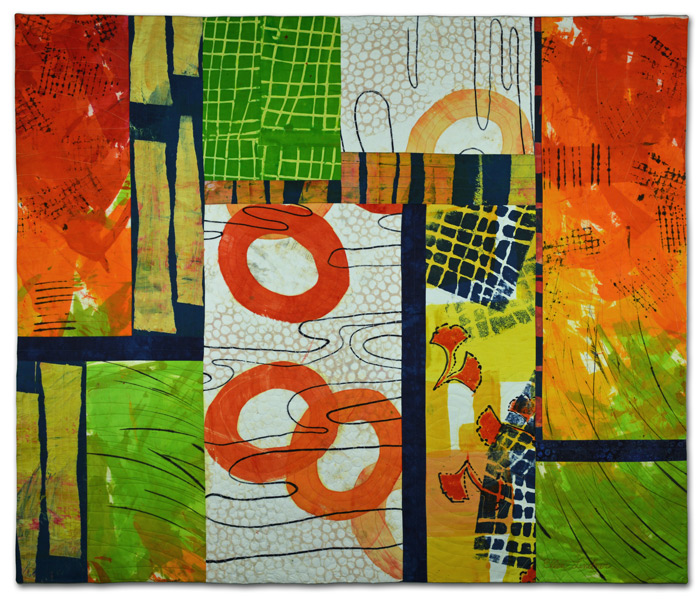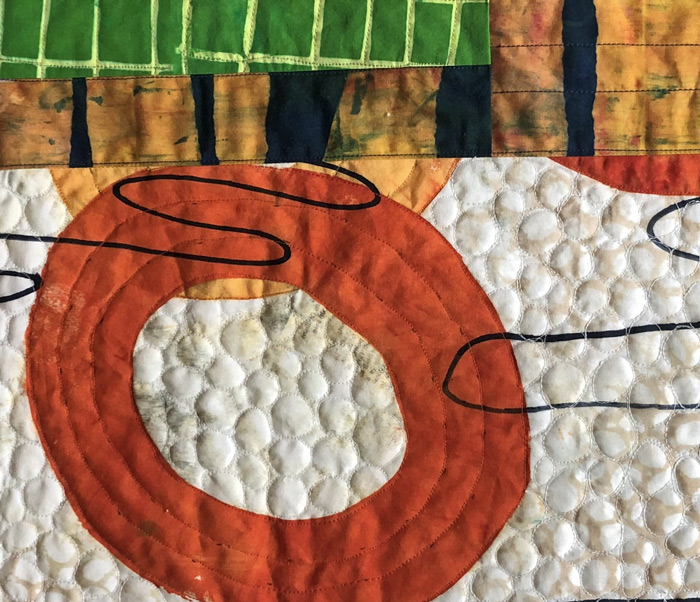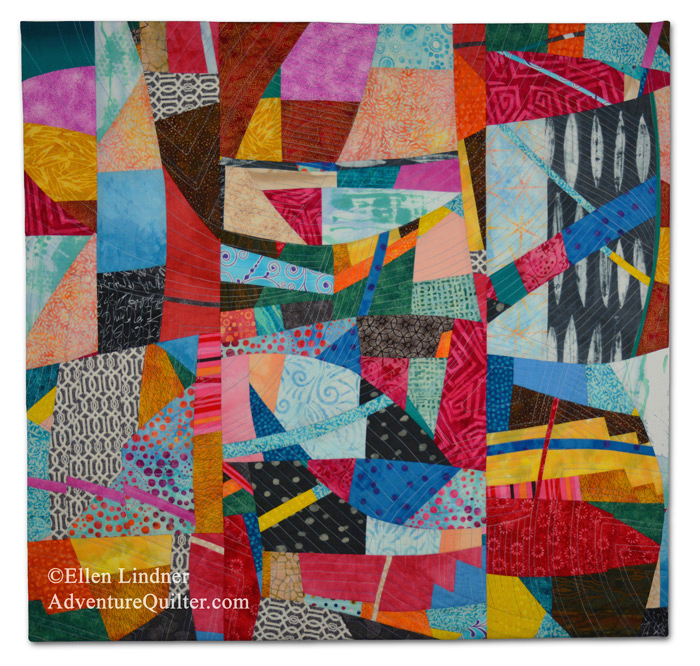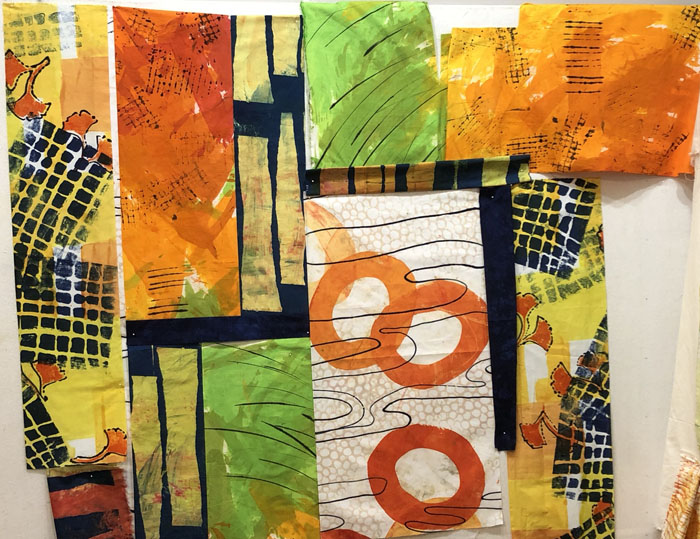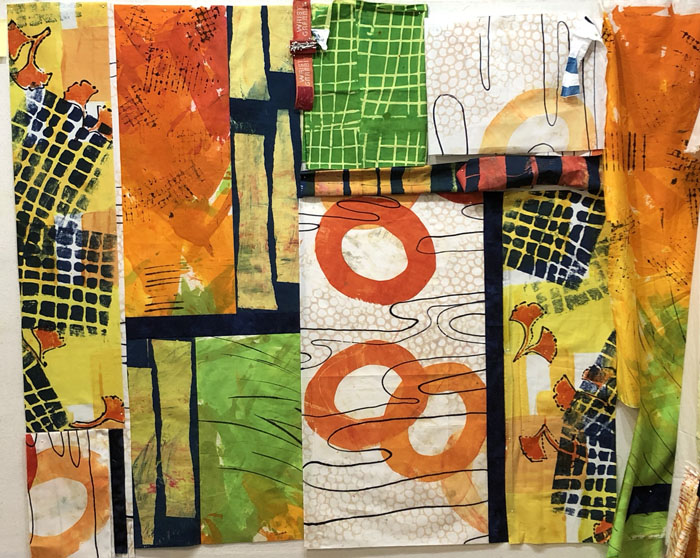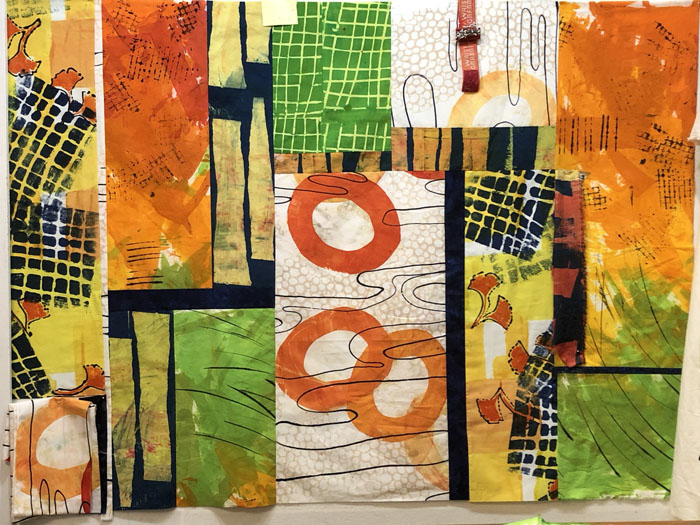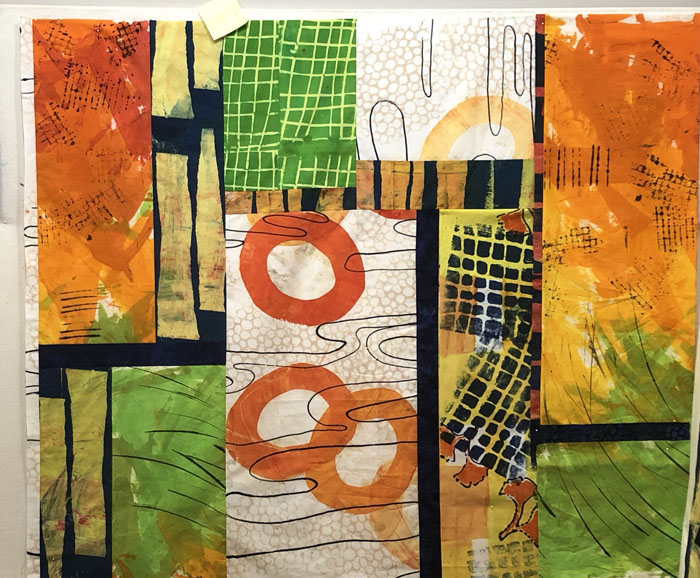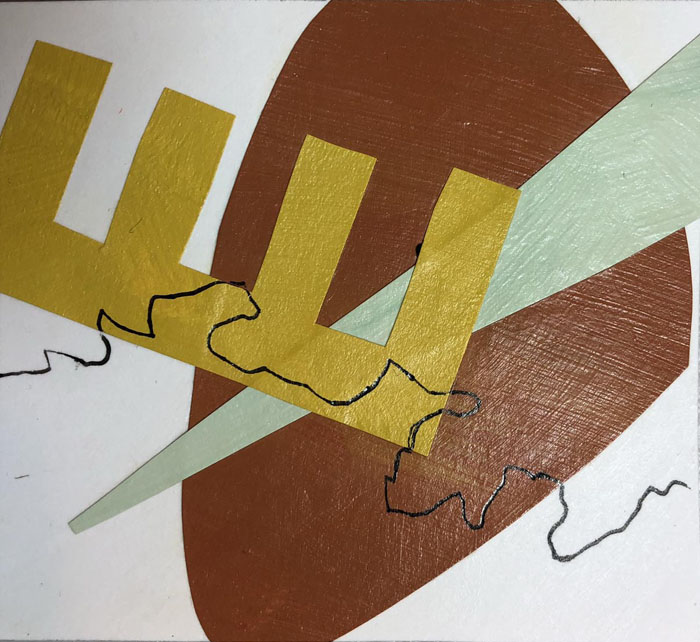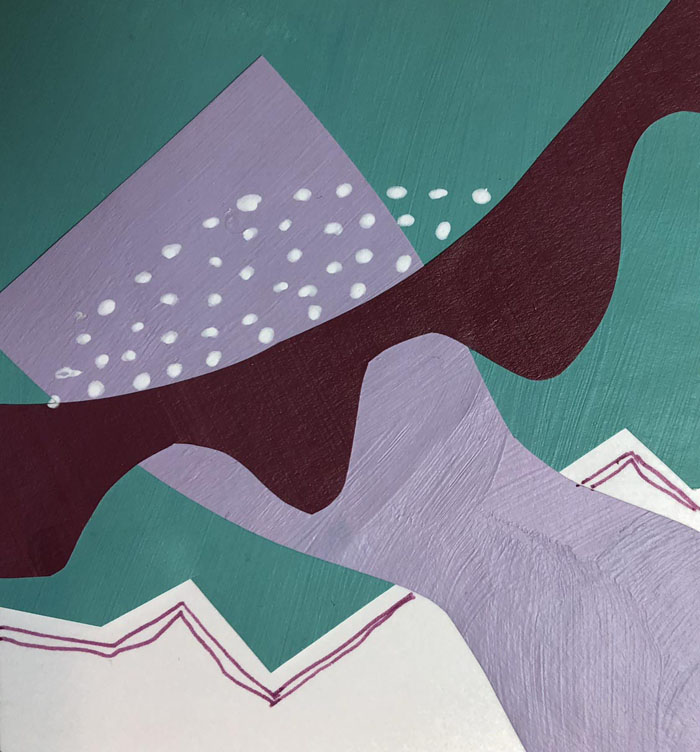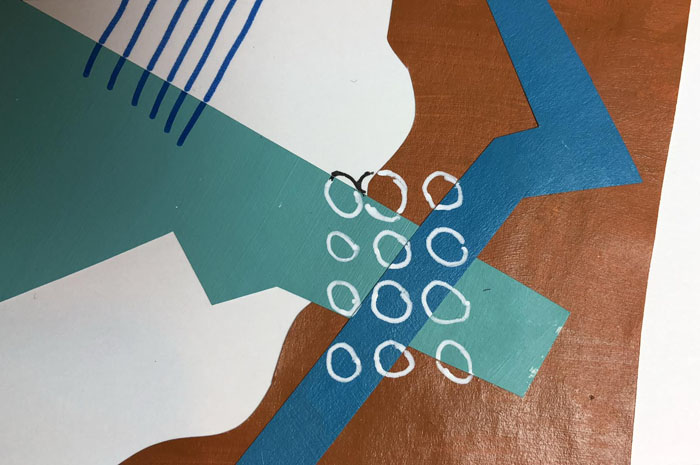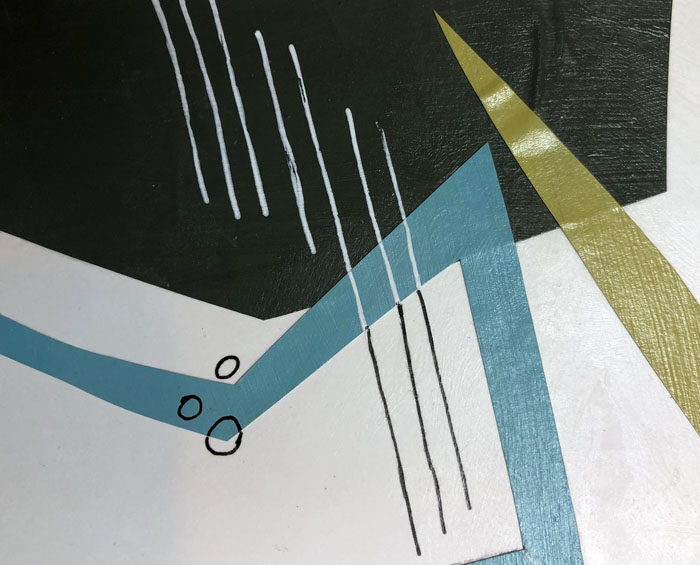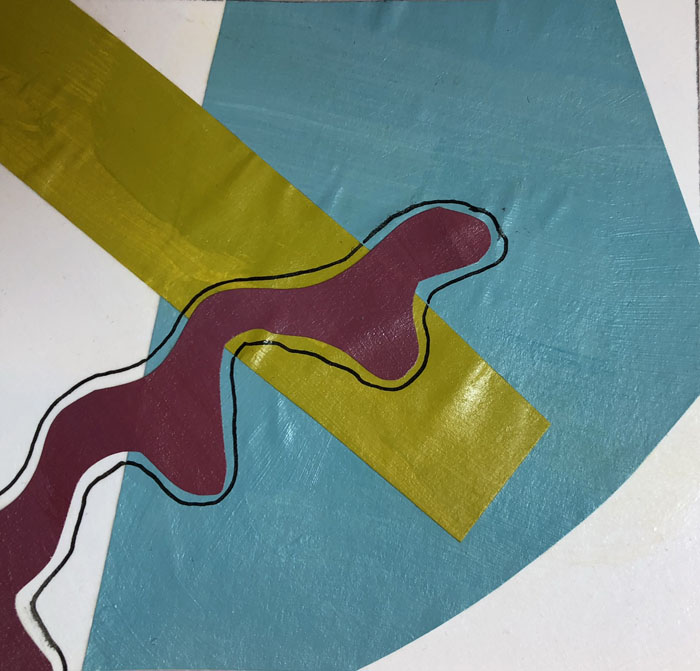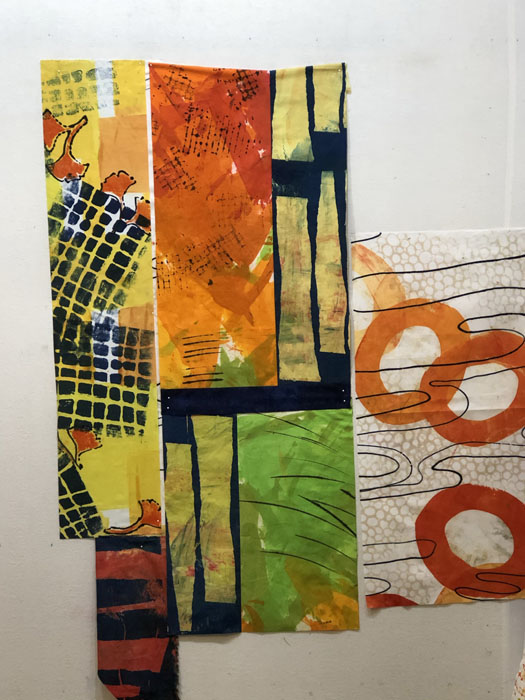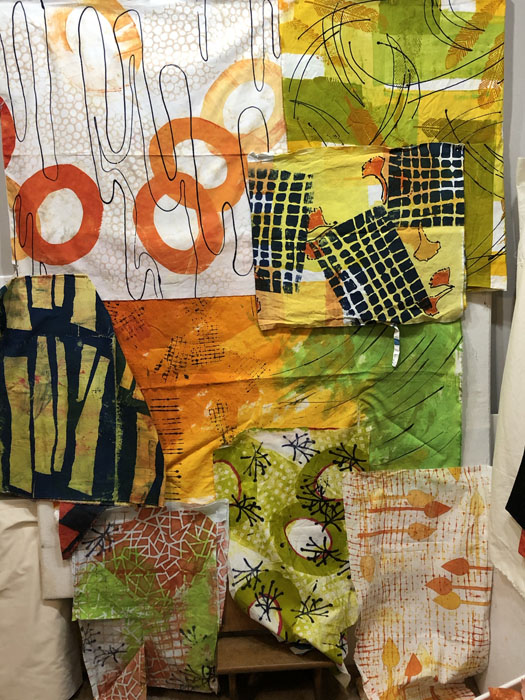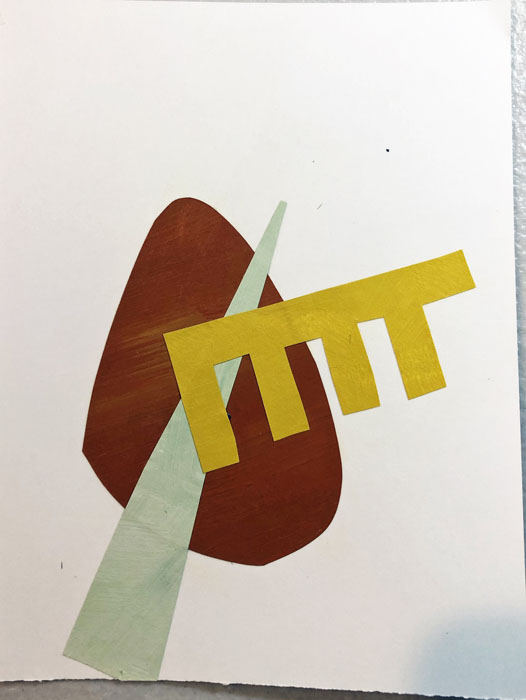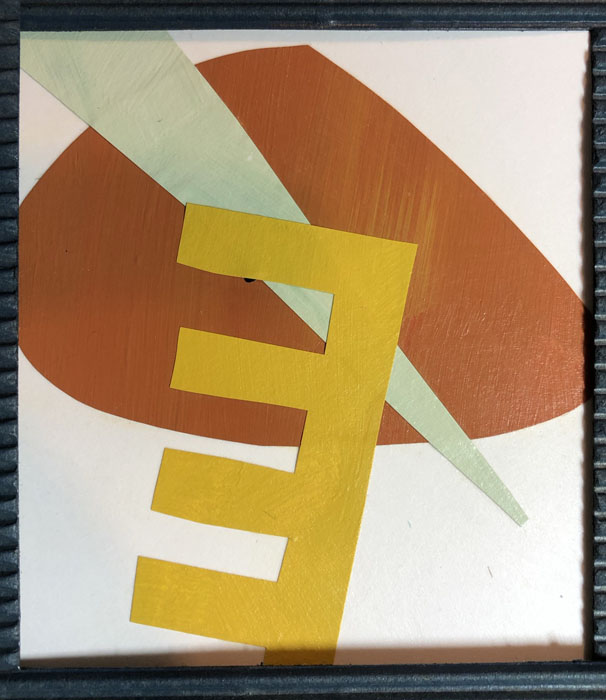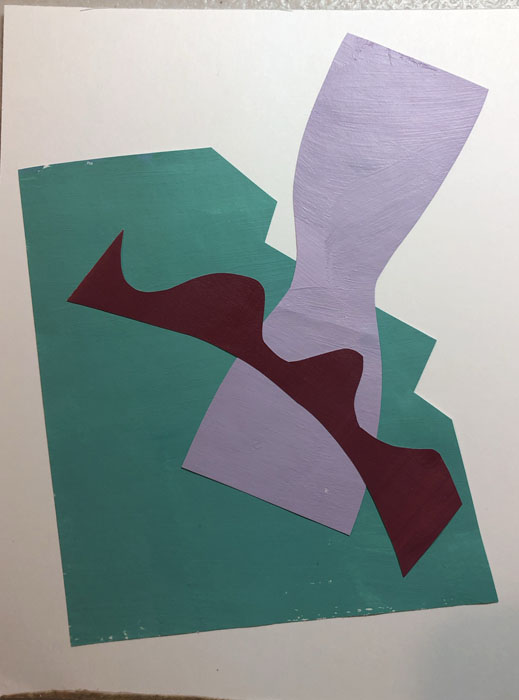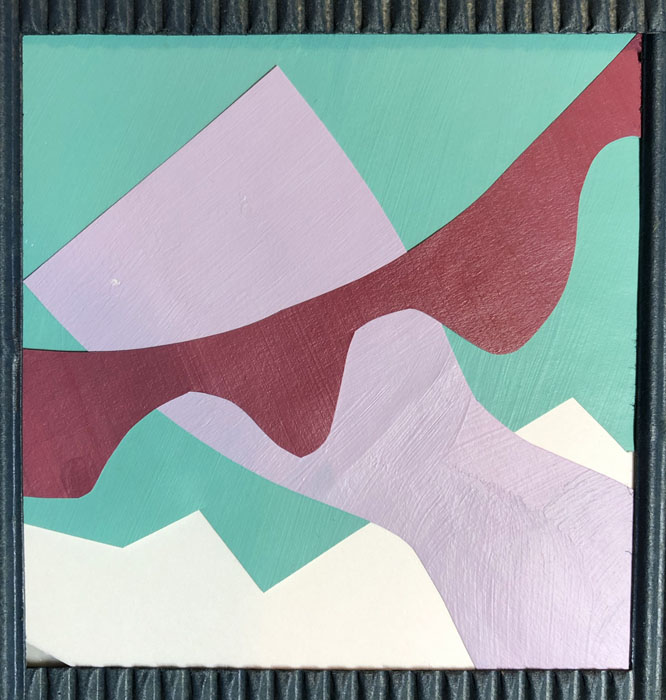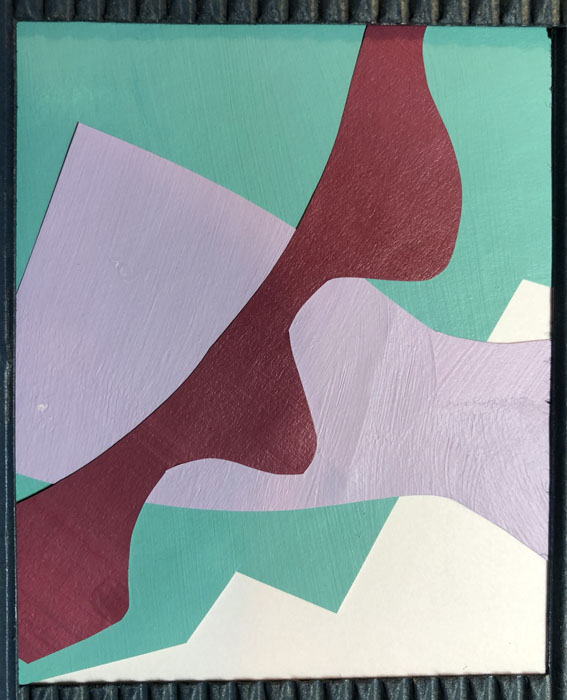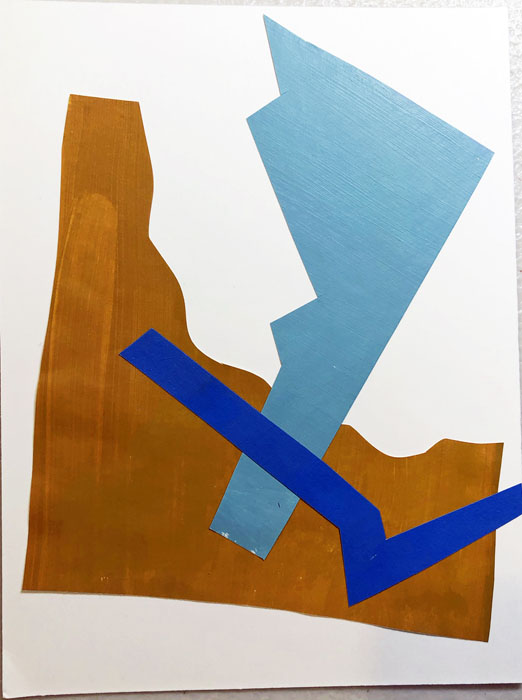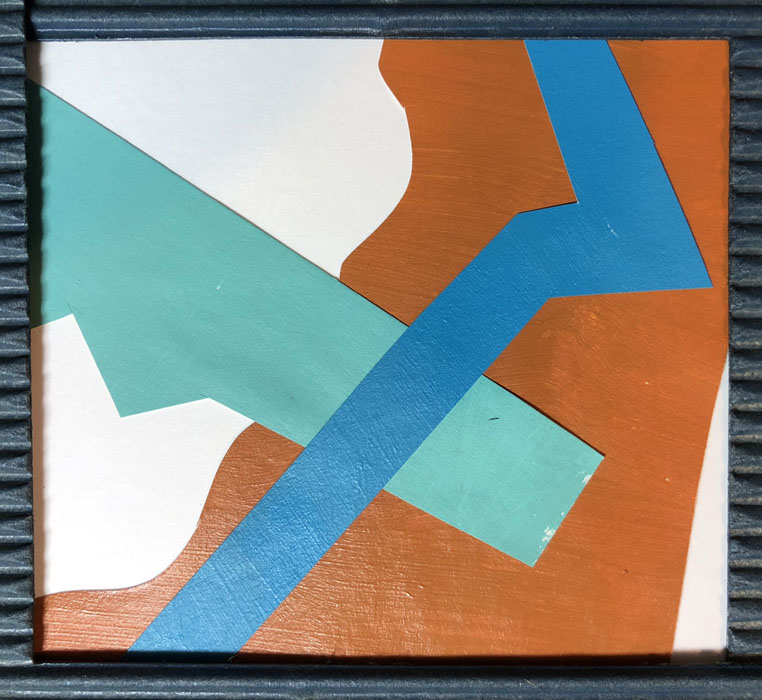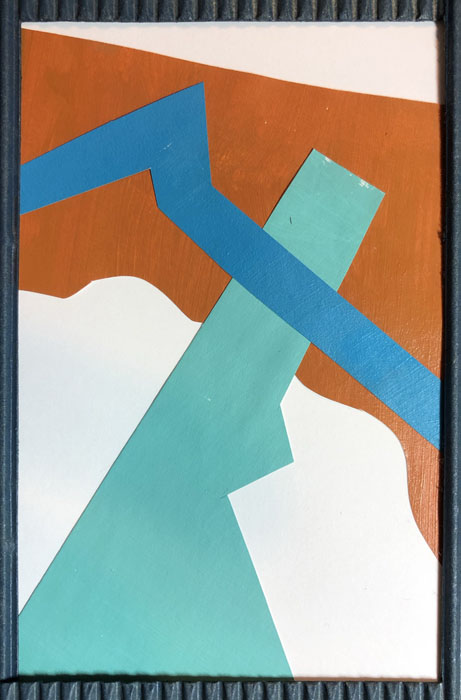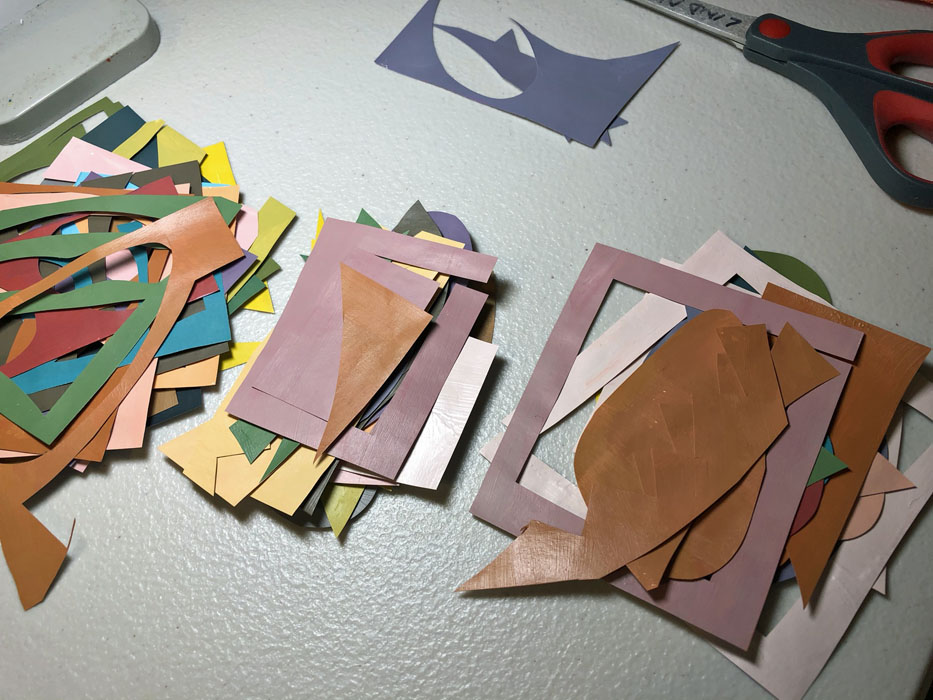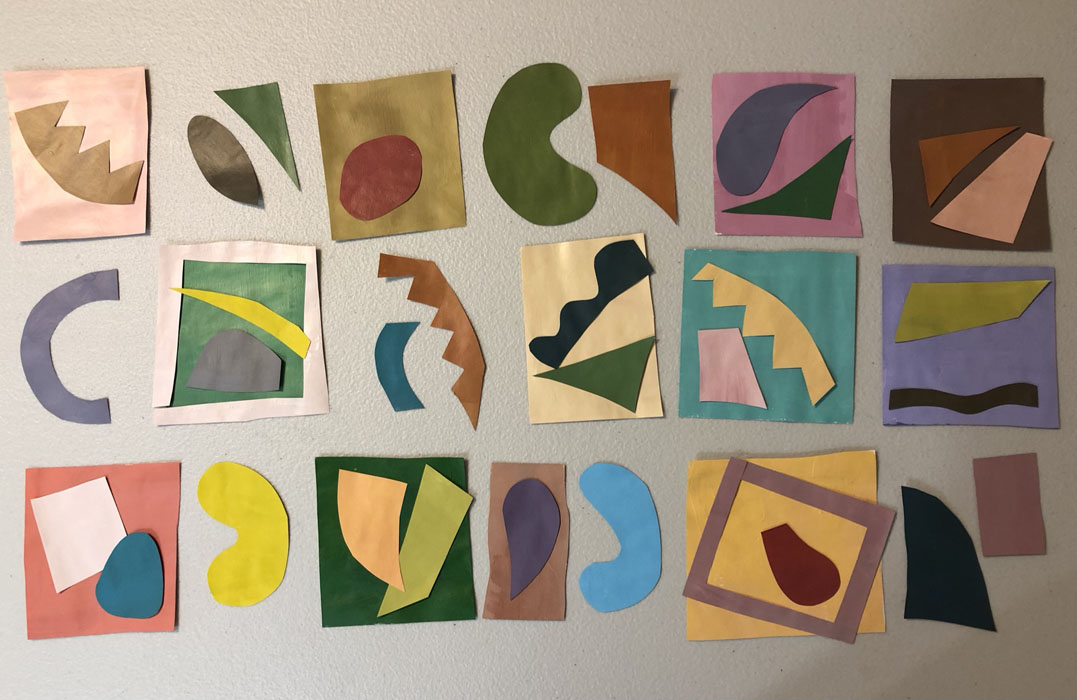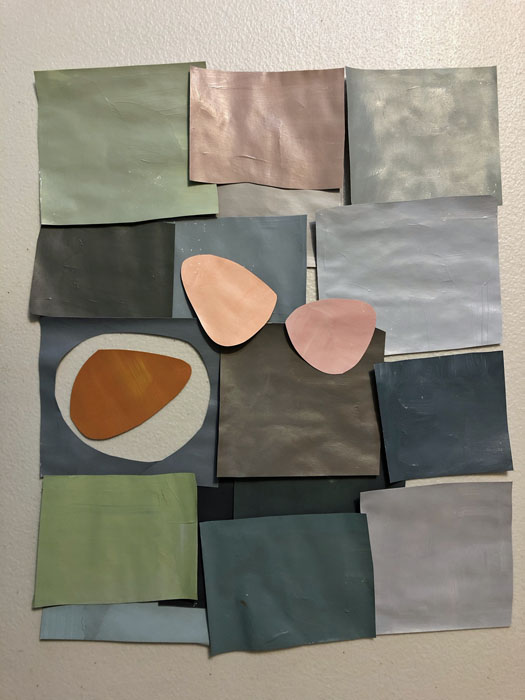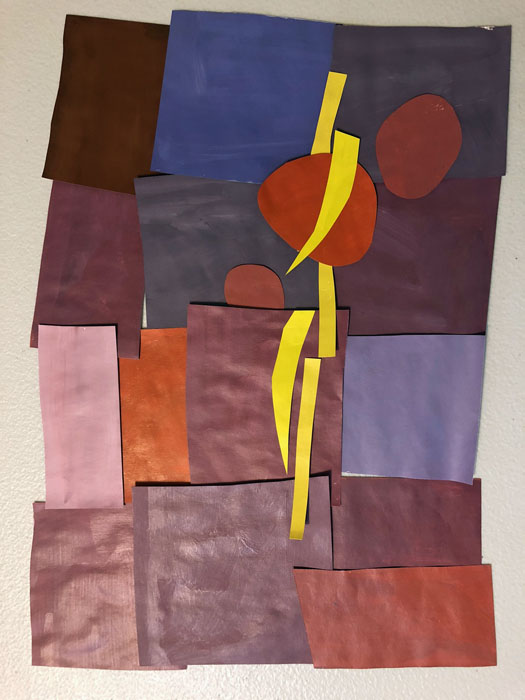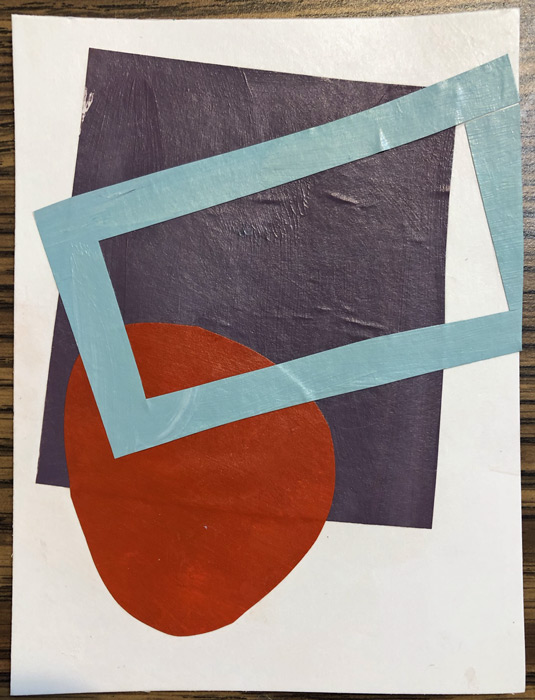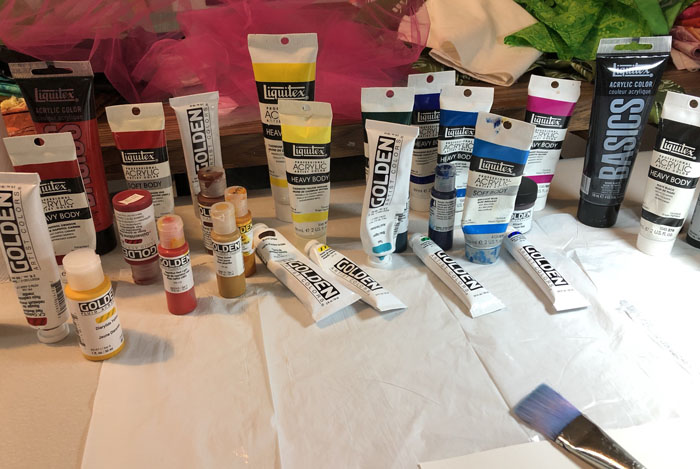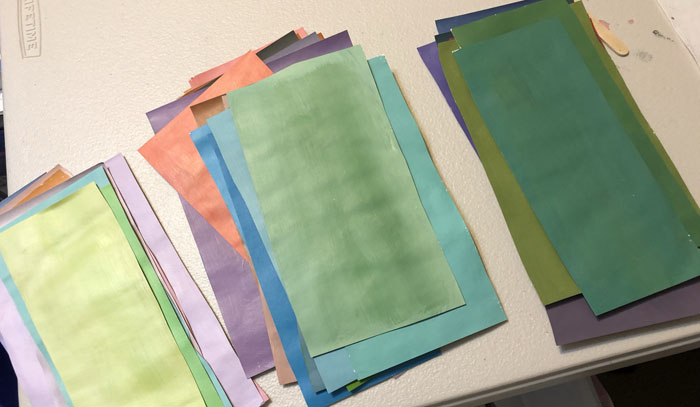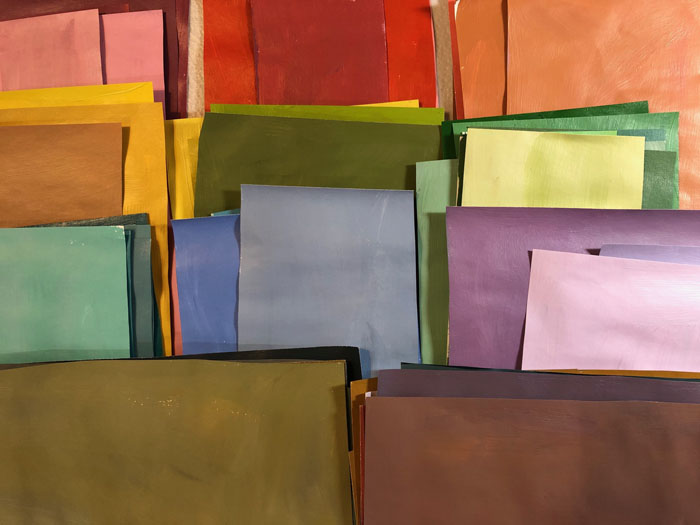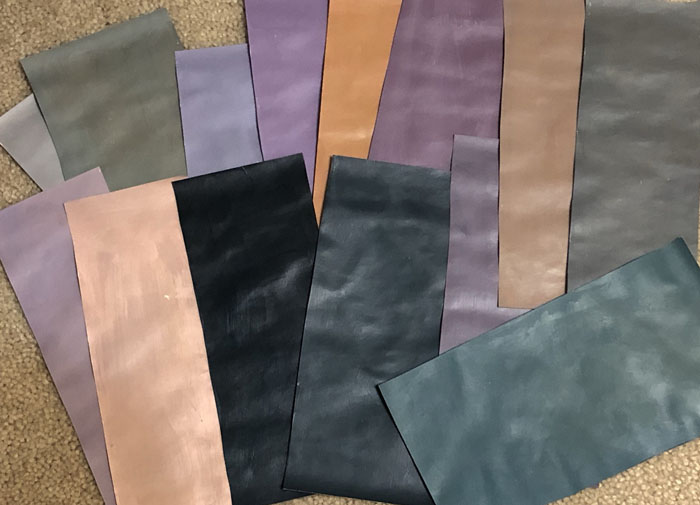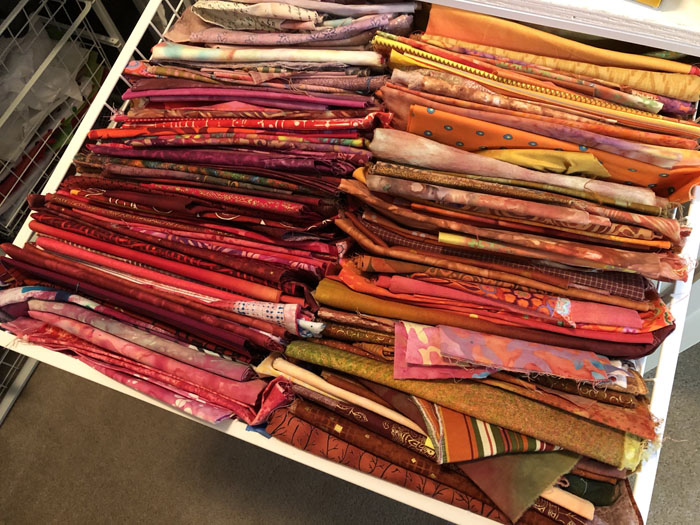I’ve never made sour dough bread, but I know that it requires a starter. And also that some of the ingredients are reserved for a future loaf. With this in mind, I think my current project is a “sour dough” quilt.
It all started with these blocks that were leftover from an earlier project. These were the starter. (Each mini composition is held together with glue.)
I didn’t really have a plan, but I put a piece of muslin up on my design wall and started slowly adding the blocks.
I immediately liked the colors and the energy of the oddball shapes. However, it was clear to me that I wouldn’t want to butt the pieces right up next to each other. Doing so would make all the shapes merge together. Instead, I’d need a dark or light fabric separating the colorful shapes.
That made me think of Susan Lapham’s quilts. She often uses white between here blocks and connects them with skinny black strips. I decided to emulate her style for this one.
Initially, I added white blocks as I was creating the composition. But, I realized it would be easier to add the white at the end. The white fabrics are also starters, since they were torn for an earlier project, but never used.
I switched to dark teal strips pretty earlier on. (And I fused the back of that fabric: very unusual for me.)
At this stage, I can see that I need some smaller pieces. Maybe I’ll cut some of my blocks or maybe I’ll add some fresh cut little squares. And what about adding an accent of a new color? It’s all up for consideration.
I’ve really been enjoying this little project. What fun things have you been working on lately?
Ellen Lindner

